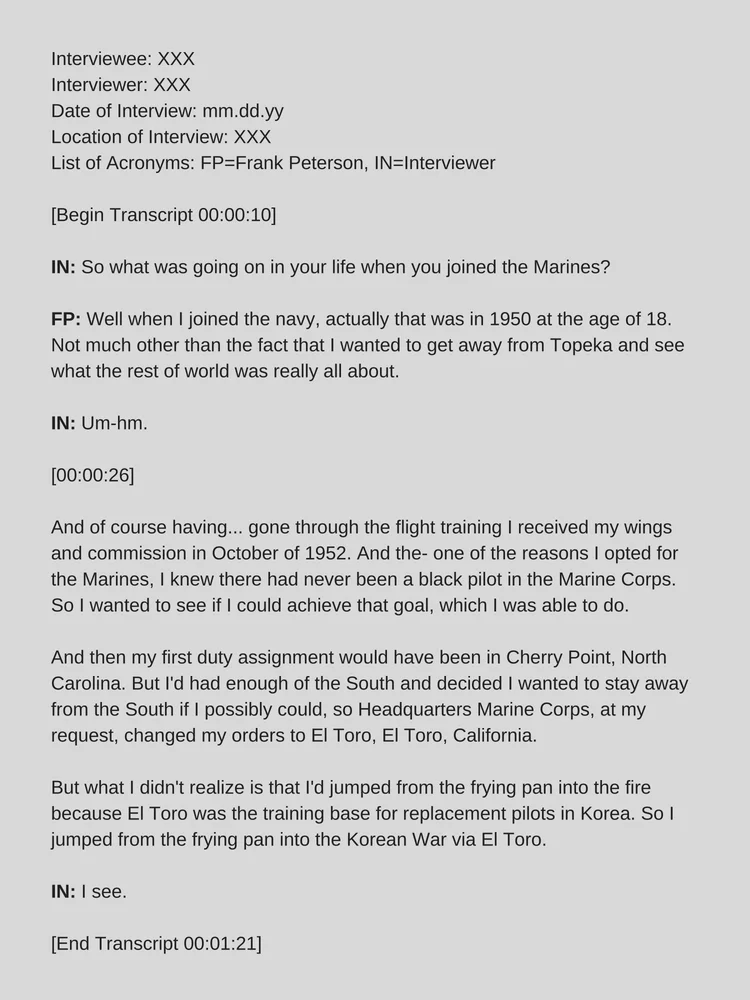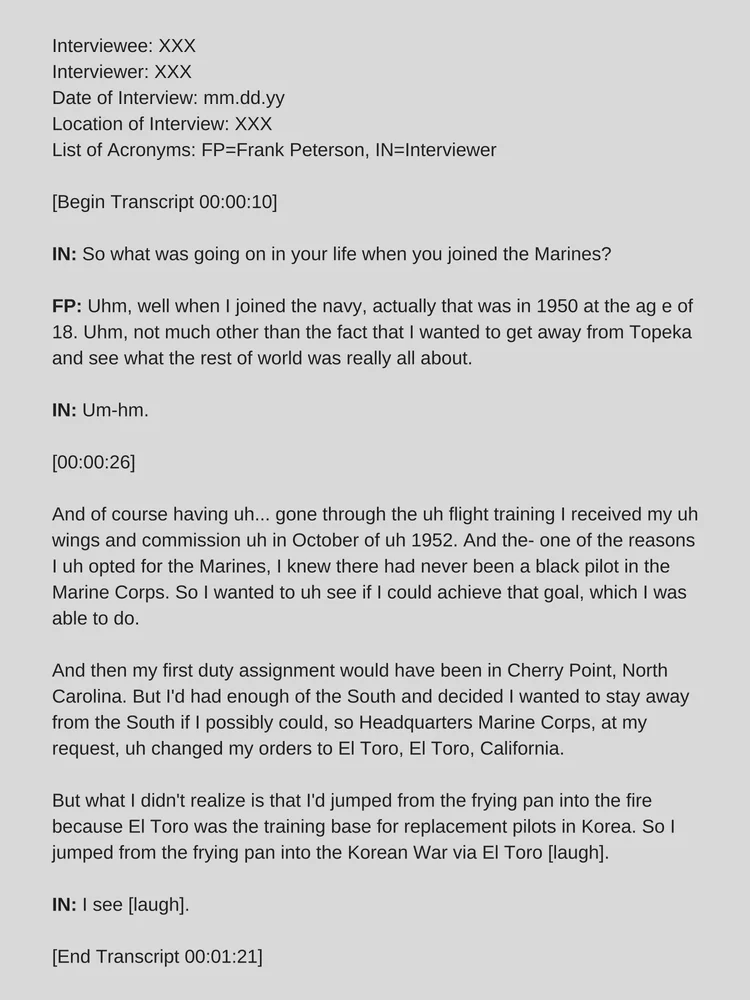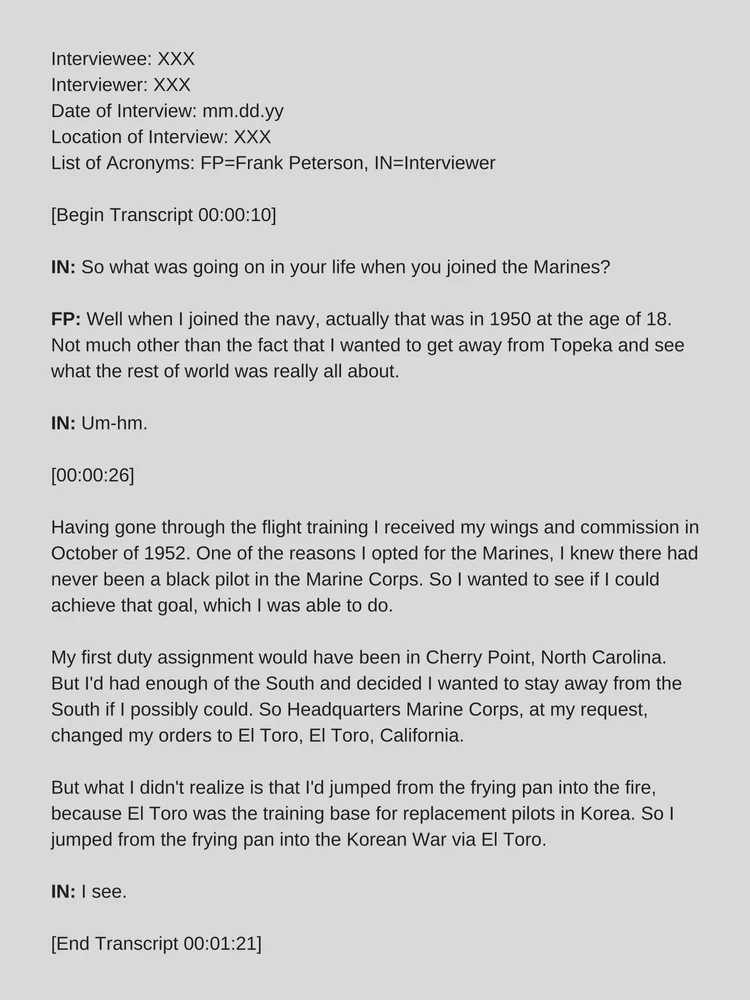We recently published a detailed guide on how to transcribe an an interview, but sometimes you need to look at real examples of transcribed interviews to understand the exact format, structure, and level of detail. So in this post we’ll share excerpts from an interview that was transcribed verbatim.
An interview transcript can have varying levels of detail based on the requirements of the reader. These levels can be categorized as
- Standard Verbatim
- True Verbatim
- Intelligent Verbatim.
Let’s take a look at example transcripts from each of these categories.
Standard Verbatim Transcription
Standard Verbatim is probably the most popular transcription style out there. It involves detailed transcription with light editing, creating a transcript that is highly accurate yet not overloaded with unnecessarily detail.
The style captures every word that is said on the recording, leaving out parts like false starts, repetitions, ambient sounds and non-verbal communication. This makes the transcript cleaner and easier to read, while still including all the relevant parts.
Example Transcript 1

Audio Source
Verbatim transcription is great for when you need to know exactly what was said on a recording but don’t necessarily need the extreme detail of true verbatim transcription.
Note: Verbatim and True Verbatim are often used interchangeably, but they’re very different. Read on to find out how.
True Verbatim Transcription
A true verbatim transcript captures EVERYTHING on the recording – including words, fillers like uhm, uh, you know etc., ambient sounds, and non-verbal communication such as laughter, pauses, and coughing.
Example Transcript 2

Audio Source
As you can see, there is no editing involved and everything is typed just as it is on the recording.
This style is ideal for research projects where HOW something is said as important as WHAT is being said.
Intelligent Verbatim Transcription
This style of transcription involves creating a clean, print-ready transcript that has been edited in detail to correct grammatical errors, improve sentence structure (paraphrasing) and remove distractions like:
- Fillers (um, uh, you know, etc.).
- False starts (incomplete sentences).
- Repetitions (repeated words and sentences).
Example Transcript 3
Audio Source
What you basically get with this style is an error-free transcript that is true to the recording, yet easy to read and ready-to-publish. It is ideal for content publishers and business transcripts.

Lewis says
Can you help me to do my transcript. I have completed school for a long time and I don’t know how to go about it.
Julius Kuti says
I like the way you have simplified the three types of transcripts . Its easy for any beginner like me to understand. Kindly send me any new updates concerning transcripts. Thankyou. Julius Kuti.
Julius Kuti says
I like the way you have simplified the three types of transcriptions . Its easy for any beginner like me to understand. Kindly send me any new updates concerning transcriptions. Thankyou. Julius Kuti.
Donna says
Wow i like the way you explained it for beginners like me its clear and precise